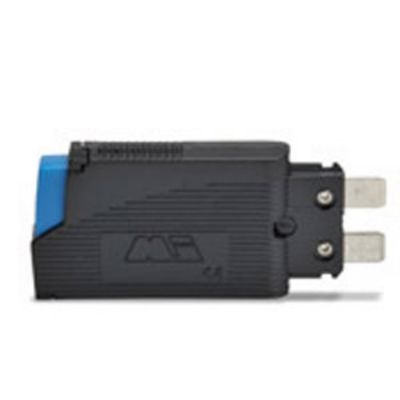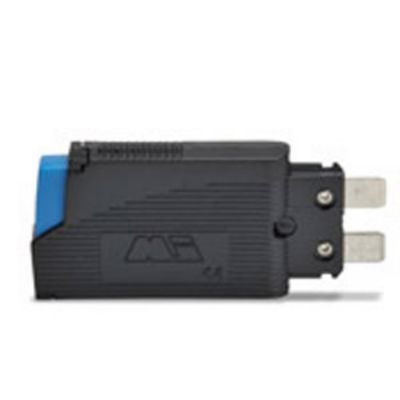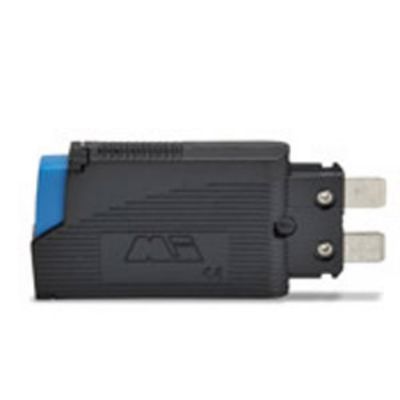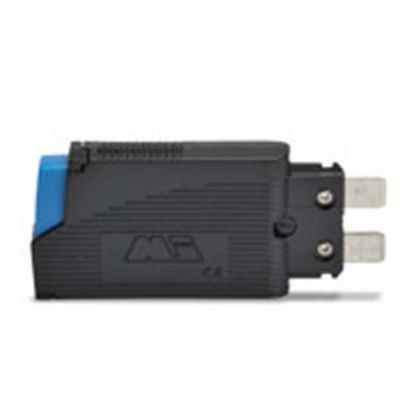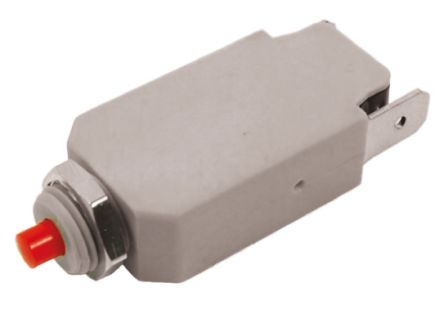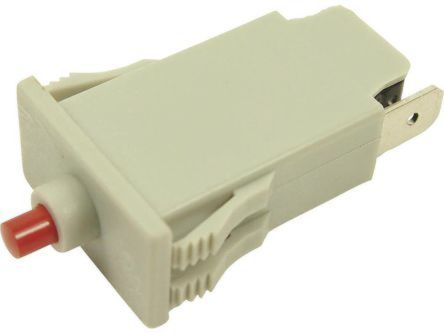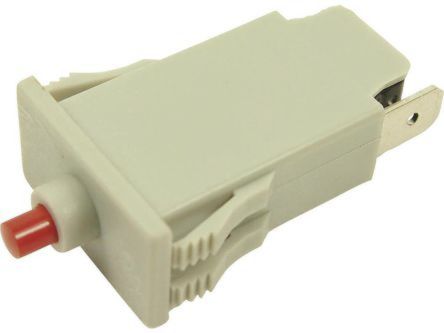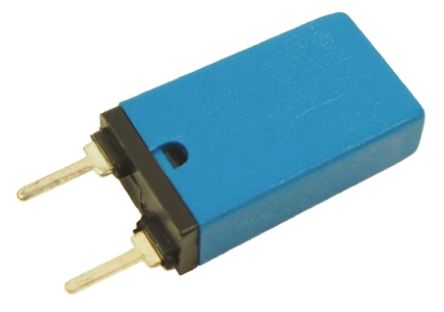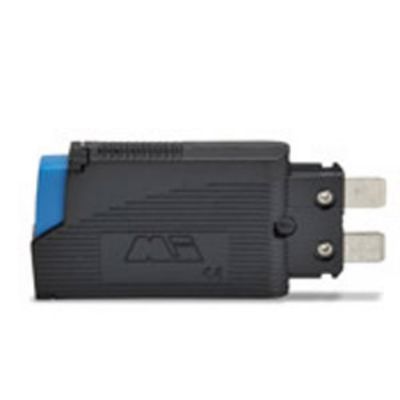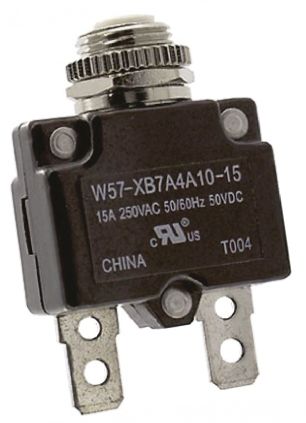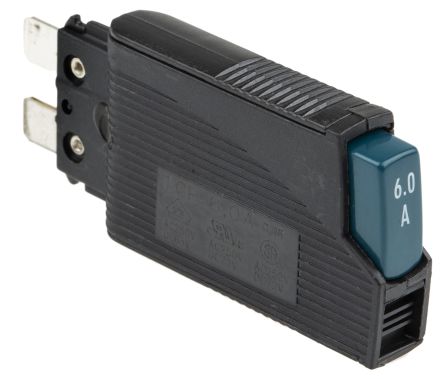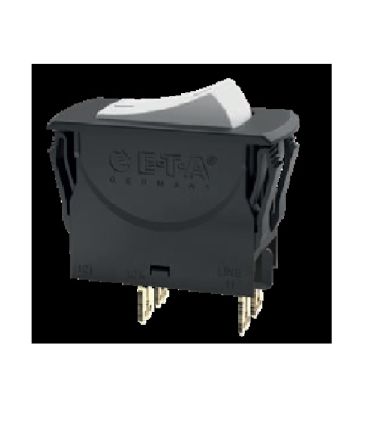- Automation & Control Gear
- Cables & Wires
- Enclosures & Server Racks
- Fuses & Circuit Breakers
- HVAC, Fans & Thermal Management
- Lighting
- Relays & Signal Conditioning
- Switches
- Batteries & Chargers
- Connectors
- Displays & Optoelectronics
- ESD Control, Cleanroom & PCB Prototyping
- Passive Components
- Power Supplies & Transformers
- Raspberry Pi, Arduino, ROCK, STEM Education & Development Tools
- Semiconductors
Thermal Breakers
Thermal breakers are essential safety devices that protect electrical circuits from damage caused by overloads and short circuits. They act as automatic switches, interrupting the flow of current when excessive current is detected.
Thermal breakers protect circuits from excess current in a similar way to fuses. However, unlike fuses that burn out and need to be replaced, thermal breakers often feature a switch that allows them to be reset if tripped. Common types of thermal breakers include thermal magnetic circuit breakers and thermal automotive circuit breakers.
Different Types of Thermal Breakers
Thermal Magnetic Circuit Breakers
Thermal magnetic circuit breakers are devices that provide protection against overcurrent in circuits.
Circuit breakers usually use an automatically operated electrical switch to disrupt the flow of current when an overload or short circuit is detected. Thermal magnetic circuit breakers perform this function using an electromagnet and bimetallic strips.
They are most often used in distribution boards, making up part of the subsidiary circuits in broader electrical supply systems to protect against overcurrents.
Thermal Automotive Circuit Breakers
Thermal automotive circuit breakers are devices used to break the flow of current in automotive circuits in order to protect them against faults like overcurrents or short circuits.
The thermal aspect of this type of circuit breaker allows for smaller overcurrents over a longer period of time, but quickly trips in the event of larger overcurrents. This is useful in the case of motors, as they accommodate the small overcurrent that occurs each time the engine is switched on for a short length of time.
Thermal automotive circuit breakers are used to protect electrical networks in most types of vehicles, including cars, vans, buses, and boats.
Thermal Breakers Applications
Thermal breakers are crucial components in various electrical systems, providing essential protection against overcurrents and short circuits. Their applications span across various settings:
- Residential: Thermal breakers are commonly used in household distribution boards (also known as fuse boxes or consumer units) to protect individual circuits that power lighting, appliances, and other electrical devices.
- Commercial: Thermal breakers feature in commercial buildings, protecting electrical circuits that power lighting, HVAC systems, and other electrical equipment.
- Industrial: High-power circuits, machinery, and equipment in industrial settings rely on thermal breakers for protection against overcurrents and short circuits, ensuring safe and reliable operation.
How to Choose the Right Thermal Breaker Switch
Selecting the appropriate thermal circuit breaker switch requires careful consideration of several factors:
- Current rating: The current rating of a thermal breaker indicates the maximum current it can carry continuously without tripping. Choose a breaker with a current rating that matches the amperage requirements of the circuit you are protecting.
- Voltage rating: The voltage rating of a thermal breaker indicates the maximum voltage it can safely handle. Ensure that the breaker's voltage rating is compatible with the voltage of your electrical system.
- Trip curve: Thermal breakers have different trip curves, which determine how quickly they trip in response to an overcurrent. Choose a trip curve that is appropriate for the type of load and the level of protection required.
- Number of poles: The number of poles on a thermal breaker indicates the number of circuits it can protect. Single-pole breakers protect one circuit, while double-pole breakers protect two circuits.
- Mounting style: Thermal breakers are available in various mounting styles, such as DIN rail mount or panel mount. Choose a mounting style that is compatible with your installation requirements.
How to Install Thermal Circuit Breaker Switches
Installing a thermal circuit breaker typically involves connecting the breaker to the appropriate terminals in the distribution board or electrical panel. The incoming power supply is connected to the input terminal, and the outgoing circuit wires are connected to the output terminal.
It is crucial to ensure proper wiring connections and tighten the terminals securely to prevent loose connections or overheating. For those less confident in performing the installation themselves, it is wise to consider hiring a qualified electrician to ensure electrical safety and compliance with electrical codes.
How to Buy Thermal Breakers Online from RS Hong Kong?
RS Hong Kong is a trusted supplier and distributor of thermal breakers, offering a wide selection of high-quality devices from leading brands such as Schneider Electric, Phoenix Contact, and ETA. Our thermal breakers are available in various configurations, current ratings, and voltage ratings to meet diverse needs, so you can find the perfect thermal breaker for your requirements on our user-friendly online platform.
Beyond thermal breakers, we also offer a comprehensive range of measurement and testing tools, including multifunction electrical testers and calipers, providing a one-stop shop for all your electrical needs.
How Delivery Works at RS Components Hong Kong
Our flexible delivery services, including next-day and express options, are available to ensure you receive your products promptly and efficiently. Please visit our delivery information page for more information about our delivery options, fees, and estimated delivery times.
